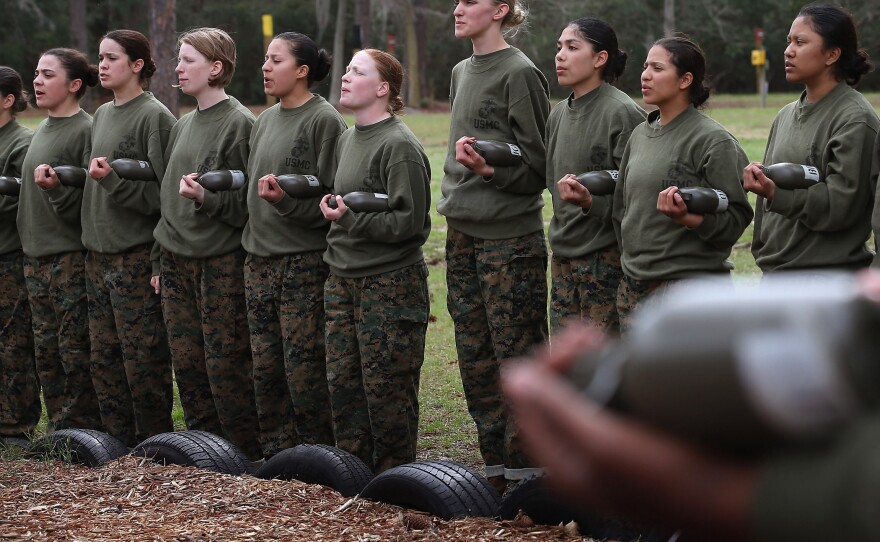
When the Pentagon said earlier this year that it would open ground combat jobs to women, it was cast in terms of giving women equal opportunities in the workplace -- the military workplace.
But the move has practical considerations, too. The military needs qualified people to fill its ranks, and it's increasingly harder to find them among men.
"It's fairly common knowledge that our population of military-age young men, who qualify for the military, is declining," Joint Chiefs Chairman Gen. Martin Dempsey said in an interview with NPR just after the Pentagon announced that women no longer be excluded from ground combat jobs.
Too many potential male recruits have criminal records, drop out of high school or have drug problems. In addition, the rising obesity rate is also a factor.
Expanding The Candidate Pool
Dempsey and the joint chiefs looked out to the end of the decade and decided they had to recruit more women.
"As a very practical matter, we decided if in 2020 we're going to need these young ladies, and we're going to need to attract as much diversity and as much talent as we can possibly attract, if that's going to be the case, what are we waiting for?" he said
It's a serious concern. Less than 25 percent of young people -- both male and female -- can actually meet the standards for military enlistment today. Those standards disqualify more men than women. Young men account for three-fourths of all arrests, and in all 50 states, males have a higher high school dropout rate than females.
"Recruiters anecdotally will have fewer issues with a female applicant than they will with a male," says Kathleen Welker, who is with the U.S. Army Recruiting Command at Fort Knox, Ky.
Opening more combat jobs to women will help the Army meet its goals, she says.
"It expands the pool of candidates who are eligible to enlist across the board," she says.
Setting Standards
But will women want to sign up for those new jobs in the infantry, armor and artillery units?
Bernard Rostker, a former undersecretary of defense for personnel, says he's doubtful many young women will choose those careers.
"We're not prepared to force women into combat positions. It's a very nontraditional role," he says. "The numbers would likely be quite small.
And then there's the question of whether women who apply can meet the tough physical standards for ground combat. Dempsey and other military leaders will soon review the training program. He said some existing standards -- which include everything from pull-ups to carrying heavy loads -- need to be revised.
"There are existing standards, many of which haven't been dusted off in a very long time, many of which have been narrowly focused just on physical standards but without the companion piece of psychological and intellectual standards," Dempsey said.
Statements like that are leading some military officers to complain privately that combat training will be watered down to allow more women to pass.
Meanwhile, some women already are trying to meet the existing physical standards. Last fall, two female Marines were the first to try and complete the grueling, 12-week-long Infantry Officer Course. They failed, along with about 20 percent of the men.
Later this month, two more female Marines will see if they can make it.
Copyright 2013 NPR. To see more, visit www.npr.org.






